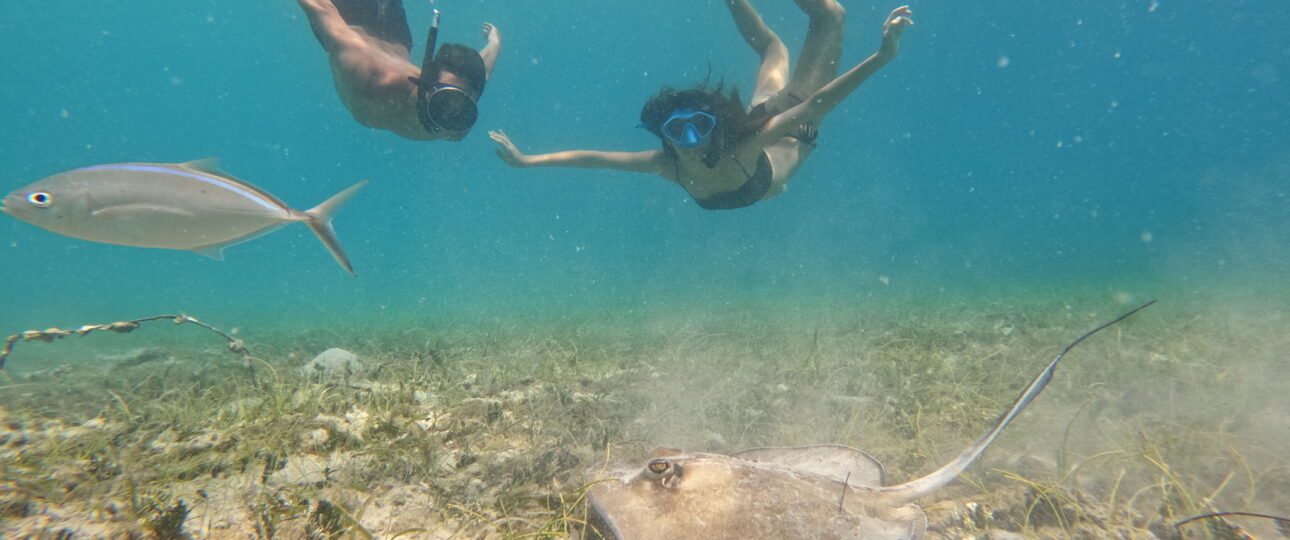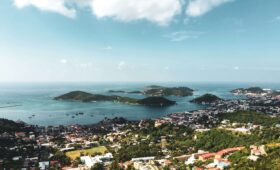Introduction
The Virgin Islands, with their crystal-clear waters and vibrant marine ecosystems, have earned a reputation as one of the top destinations for snorkeling enthusiasts worldwide. These islands boast a unique combination of stunning coral reefs, calm bays, and sheltered coves, making them ideal for both beginner and experienced snorkelers. From colorful tropical fish to majestic sea turtles, the underwater world of the Virgin Islands is teeming with life, offering an unforgettable experience for those looking to explore beneath the waves.
This article will guide you through the best snorkeling spots in the Virgin Islands, both in the U.S. and British territories, providing tips for an unforgettable adventure. Whether you’re looking for calm, shallow waters or more challenging sites, you’ll discover some of the most breathtaking places to snorkel in these tropical gems.
Why Snorkeling in the Virgin Islands is Unique
The rich marine life is one of the most captivating aspects of snorkeling in the Virgin Islands. Snorkelers can expect to see a diverse array of species, including sea turtles, stingrays, octopuses, and vibrant schools of tropical fish like parrotfish, angelfish, and sergeant majors. The colorful coral reefs provide a crucial habitat for these creatures, offering snorkelers an up-close view of living coral, sponges, and sea fans swaying in the gentle currents. The region is also home to some rare species, making each snorkeling trip an adventure of discovery.
Perhaps most remarkable is the exceptional water clarity. Visibility in the Virgin Islands is often up to 100 feet or more, allowing snorkelers to fully appreciate the beauty of the underwater world. This clarity, combined with the rich marine biodiversity and varied geography, makes snorkeling in the Virgin Islands a truly unique experience.
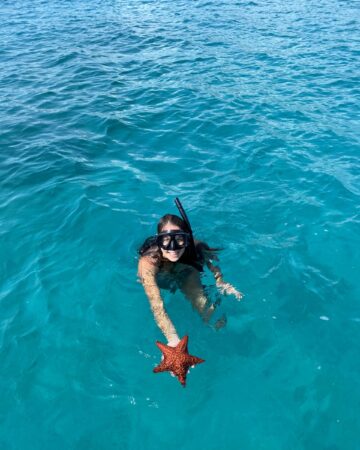
Best Snorkeling Spots in the US Virgin Islands
The US Virgin Islands boast some of the most pristine snorkeling locations in the Caribbean. From calm, shallow waters to exciting underwater trails, snorkelers of all levels can find their ideal adventure.
Trunk Bay, St. John
One of the most famous and visually stunning snorkeling spots in the US Virgin Islands, Trunk Bay offers an underwater snorkeling trail that attracts visitors from around the world. The 225-yard-long trail is marked with underwater plaques, guiding snorkelers through the vibrant coral reefs while offering information about the marine species they encounter. The calm, clear waters make it easy to see an array of colorful fish like blue tangs, wrasses, and parrotfish, as well as sea fans and brain corals. As part of the Virgin Islands National Park, Trunk Bay is protected, ensuring a healthy marine ecosystem that enhances the snorkeling experience.
Honeymoon Beach, St. John
Known for its calm, shallow waters and easy access, Honeymoon Beach is a fantastic spot for beginner snorkelers or those seeking a relaxing snorkeling experience. Located on the north shore of St. John, this tranquil beach is part of the Virgin Islands National Park and offers an ideal environment for spotting sea turtles, rays, and vibrant schools of fish. The protected cove ensures calm conditions, and the shallow coral reefs just offshore are teeming with marine life. In addition to snorkeling, Honeymoon Beach is a popular spot for kayaking and paddleboarding, making it a well-rounded destination for beachgoers.
Buck Island, St. Croix
A designated national monument, Buck Island Reef National Monument is one of the premier snorkeling destinations in the entire Caribbean. The crystal-clear waters surrounding this small, uninhabited island are home to vibrant coral reefs and a rich diversity of marine species. The island is particularly famous for its underwater coral grottoes and sea gardens, where snorkelers can swim alongside large schools of fish, sea turtles, and the occasional shark or stingray. The reefs are incredibly colorful, featuring elkhorn corals, sea fans, and a variety of hard and soft corals. Buck Island is also known for its "Turtle Beach," a pristine white sand beach often ranked among the best in the Caribbean.
Cane Bay, St. Croix
While Cane Bay is popular among divers, it’s also a fantastic snorkeling spot, especially for those interested in exploring dramatic underwater landscapes. Located on the north shore of St. Croix, Cane Bay is known for its famous "Cane Bay Wall," a drop-off that plunges several thousand feet into the ocean. While snorkelers won’t venture that deep, the wall’s upper sections are accessible from shore, offering a thrilling snorkeling experience with excellent visibility. The coral reefs near the drop-off are home to a variety of marine life, including reef fish, rays, and the occasional spotted eagle ray. For adventurous snorkelers, Cane Bay provides a more dynamic experience with the opportunity to explore deeper waters.
These snorkeling spots in the US Virgin Islands offer a range of experiences, from beginner-friendly, shallow waters to more advanced underwater explorations, all set against the backdrop of the Caribbean's natural beauty.
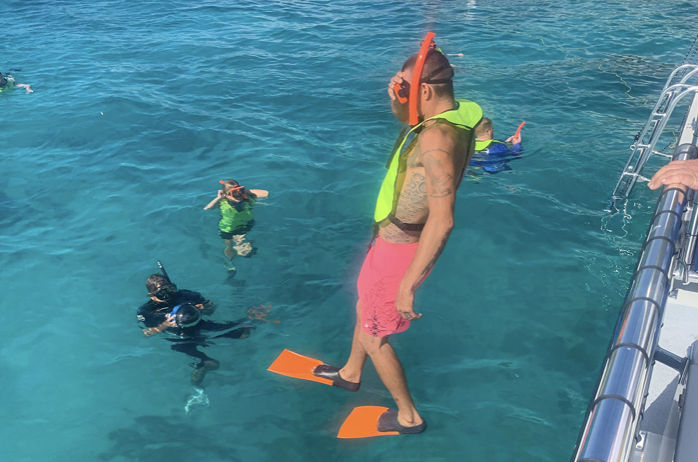
Top Snorkeling Spots in the British Virgin Islands
The British Virgin Islands (BVI) offer an incredible range of snorkeling experiences, from hidden caves to expansive coral reefs teeming with marine life. Here are the top spots to explore:
The Baths, Virgin Gorda
One of the most iconic destinations in the British Virgin Islands, The Baths on Virgin Gorda is famous for its striking rock formations and hidden caves, making it a unique snorkeling experience. Large granite boulders, some reaching 40 feet in height, form natural tidal pools and underwater passages that are ideal for exploring with a snorkel. As you swim through these narrow passages, you can spot colorful fish like sergeant majors, angelfish, and butterflyfish darting among the rocks and corals. The crystal-clear water allows for excellent visibility, and the variety of small caves and secluded pools provide a sense of adventure. The Baths are perfect for snorkelers of all skill levels, offering both shallow and deeper areas to explore.
Norman Island Caves
Known as the inspiration for Robert Louis Stevenson’s *Treasure Island*, Norman Island offers an exciting snorkeling experience with its mysterious caves and rich history. The island is located on the southern edge of the BVI archipelago, and its clear waters make it a prime spot for snorkeling. The caves themselves are tucked into the cliffs, and snorkelers can venture inside to discover a fascinating underwater world. As you enter the caves, you'll notice the sunlight filtering through the water, illuminating schools of tropical fish, colorful sponges, and corals. Outside the caves, the surrounding waters are home to stingrays, parrotfish, and the occasional barracuda. The blend of history, mystery, and marine life makes the Norman Island Caves a must-visit for adventurous snorkelers.
Anegada Island
Anegada is the only coral atoll in the British Virgin Islands, making it a haven for snorkelers seeking pristine coral reefs and seagrass beds. The island is surrounded by one of the largest coral reef systems in the Caribbean, the Horseshoe Reef, which stretches for miles and is home to an abundance of marine life. Snorkelers at Anegada can expect to see a wide variety of species, including sea turtles grazing on seagrass, rays gliding through the shallow waters, and colorful fish darting among the coral heads. The calm, shallow waters make it ideal for all skill levels, and the vastness of the reef offers endless exploration. With its serene beaches and unspoiled natural beauty, Anegada is a peaceful escape for snorkeling enthusiasts.
Cooper Island
Cooper Island is a lesser-known gem in the British Virgin Islands, but it offers some of the most pristine and accessible reefs in the region. Its calm, shallow waters are perfect for beginner snorkelers or those looking for a relaxing snorkeling experience. The reef around Cooper Island is vibrant and healthy, home to a variety of soft corals, sponges, and schools of colorful reef fish. Snorkelers can spot blue tangs, damselfish, and even the occasional octopus hiding among the rocks. The island’s seagrass beds are also frequented by sea turtles, making it a great spot for turtle sightings. With fewer crowds than other popular snorkeling spots, Cooper Island offers a peaceful and intimate snorkeling experience.
From the dramatic rock formations of The Baths to the expansive reefs of Anegada, the British Virgin Islands provide a diverse and stunning underwater world for snorkelers to explore. Each location offers something unique, ensuring that snorkelers of all levels can find their perfect spot in this Caribbean paradise.
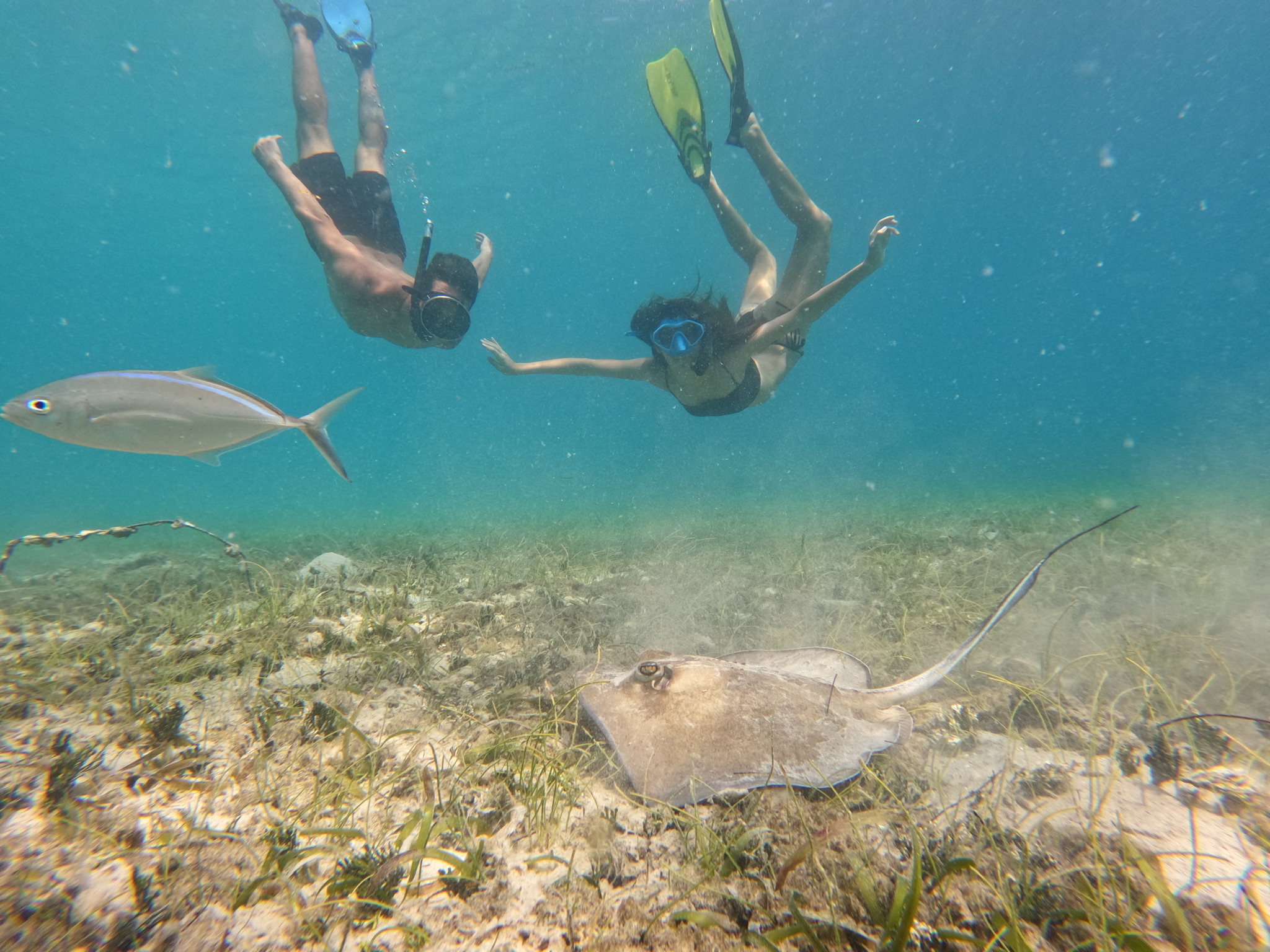
What to Expect When Snorkeling in the Virgin Islands
Snorkeling in the Virgin Islands offers an unforgettable experience, thanks to the rich marine biodiversity, healthy coral reefs, and ideal water conditions. Here's what to expect when exploring the underwater world of this tropical paradise:
Marine Life
The Virgin Islands are home to an incredible variety of marine species, providing snorkelers with the chance to observe a diverse array of wildlife. Sea turtles are a frequent sight, particularly around seagrass beds where they feed. Keep an eye out for graceful hawksbill and green sea turtles as they glide through the water. In addition to turtles, you’ll encounter colorful parrotfish, which play a crucial role in maintaining the health of coral reefs, as well as other tropical fish like angelfish, butterflyfish, and blue tangs. Stingrays, barracudas, and even the occasional nurse shark may also make an appearance in certain areas. With such a wide variety of marine life, every snorkeling trip in the Virgin Islands offers something new and exciting.
Coral Reefs
The coral reefs in the Virgin Islands are vibrant and teeming with life. Elkhorn coral, known for its large, branching structure, can be seen in many shallow reef areas, providing shelter for fish and other sea creatures. Brain coral, named for its distinct ridged appearance, is another common sight. These coral formations create intricate underwater landscapes that are perfect for exploration. While some areas have been affected by environmental stress, many parts of the reefs are thriving due to conservation efforts, making the Virgin Islands a top snorkeling destination for coral enthusiasts.
Water Conditions
The waters around the Virgin Islands are warm and inviting year-round, with average temperatures ranging from 77°F (25°C) in winter to 84°F (29°C) in summer. These ideal conditions make snorkeling comfortable at any time of year. Visibility is typically excellent, often exceeding 50 feet, allowing snorkelers to see the stunning underwater scenery clearly. Calm waters are common in most snorkeling spots, particularly around protected bays, which further enhances the snorkeling experience. Whether you’re a seasoned snorkeler or a beginner, the Virgin Islands' clear, warm waters provide the perfect environment for underwater exploration.

Snorkeling Tips for Beginners and Experts
Whether you're new to snorkeling or an experienced explorer, the Virgin Islands offer something for everyone. Here are some helpful tips to make the most of your snorkeling adventure:
Beginners
For those just starting out, the Virgin Islands have plenty of calm, shallow waters perfect for building confidence. Opt for locations like Honeymoon Beach in St. John or Cooper Island in the British Virgin Islands, which offer gentle conditions and easy access to the water. These spots have rich marine life close to shore, allowing beginners to see vibrant coral reefs and tropical fish without venturing too far. Guided snorkeling tours are also highly recommended for novices. These tours provide valuable insight into the local marine environment, with the added reassurance of an experienced guide who can ensure your safety and comfort.
Expert Snorkelers
For more seasoned snorkelers looking for a challenge, the Virgin Islands have deeper reefs and spots with stronger currents. Cane Bay in St. Croix offers stunning underwater walls and drop-offs that are ideal for experienced snorkelers who want to explore beyond the typical shallow reefs. For thrill-seekers, Norman Island Caves in the British Virgin Islands provides an adventurous experience with a combination of unique rock formations and deeper waters. Be sure to check local conditions, as currents can be strong in certain areas, providing a rewarding yet demanding snorkeling experience for those up for the challenge.
Safety Tips
Whether you're a beginner or an expert, safety should always come first. Avoid touching or stepping on coral reefs, as they are delicate ecosystems that can be easily damaged. Be mindful of marine life and observe from a distance to prevent disturbing the animals. Always check the weather and ocean conditions before heading out, and use sun protection like reef-safe sunscreen or UV-protective clothing. Lastly, if you're unfamiliar with an area, it's wise to snorkel with a buddy or join a guided tour for added safety.
Book a Tour On St Thomas
Pick Up available on St. Thomas & St. John
Best Time of Year for Snorkeling in the Virgin Islands
The Virgin Islands are a year-round destination for snorkeling, thanks to their tropical climate and consistently warm waters. However, certain months offer optimal conditions for underwater adventures.
Seasonal Overview
The best time for snorkeling in the Virgin Islands is during the dry season, from December to May. During these months, the weather is mild, with calm seas and excellent visibility, often exceeding 100 feet. These conditions are ideal for seeing vibrant coral reefs and diverse marine life. Additionally, December to May coincides with the high tourist season, so it’s a good idea to book accommodations and tours in advance to secure the best spots.
Avoiding Hurricanes
Hurricane season in the Caribbean typically runs from June to November, with peak storm activity occurring between August and October. While it’s still possible to snorkel during these months, the risk of storms can cause unpredictable weather and rough seas. If you're planning a trip during this time, monitor weather forecasts closely and consider travel insurance in case of any cancellations due to storms. For a safer experience, it's best to avoid planning your snorkeling trip in the height of hurricane season.
By choosing the right time of year, you can ensure your snorkeling experience in the Virgin Islands will be both safe and unforgettable.
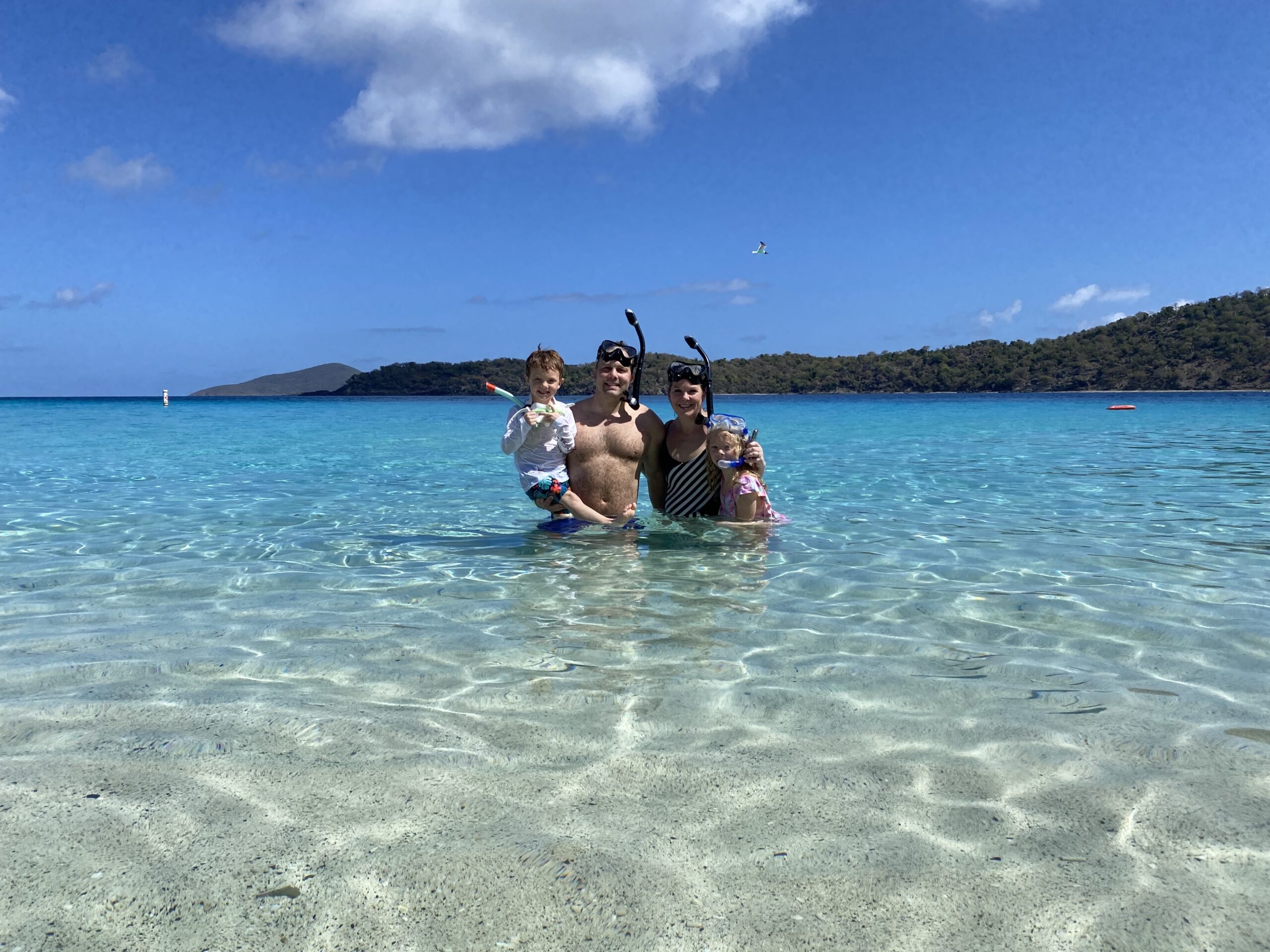
Equipment and Gear Recommendations
To fully enjoy your snorkeling adventure in the Virgin Islands, it’s essential to have the right gear. Here's a quick guide on what to bring and whether to rent or buy equipment.
What to Bring
Essentials include a snorkel, mask, and fins. A high-quality mask ensures a clear view underwater and prevents leaks, while well-fitting fins help you move efficiently. Consider bringing reef-safe sunscreen, as regular sunscreens can harm coral reefs. For extra comfort, a rash guard or UV-protective shirt will shield you from the sun and jellyfish stings.
Renting vs. Buying
If you’re an occasional snorkeler, renting equipment from local shops is a convenient option. Most snorkeling tour operators in the Virgin Islands provide gear as part of the package, so you don’t need to carry your own. For avid snorkelers, investing in personal gear ensures a perfect fit and familiarity with your equipment. Bringing your own gear also means you’re always prepared to explore new spots.
Snorkeling Tours
Many tour companies, such as Island Buddy and Virgin Island EcoTours, offer guided snorkeling excursions and provide all the necessary gear. Opting for a tour not only provides equipment but also offers expert guidance on the best snorkeling spots in the region.
Book a Tour On St John
Pick Up available on St. Thomas & St. John

